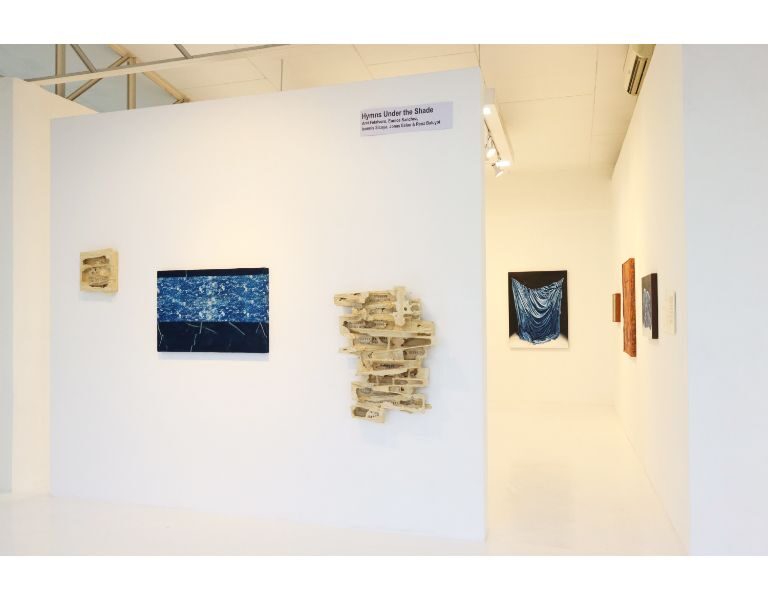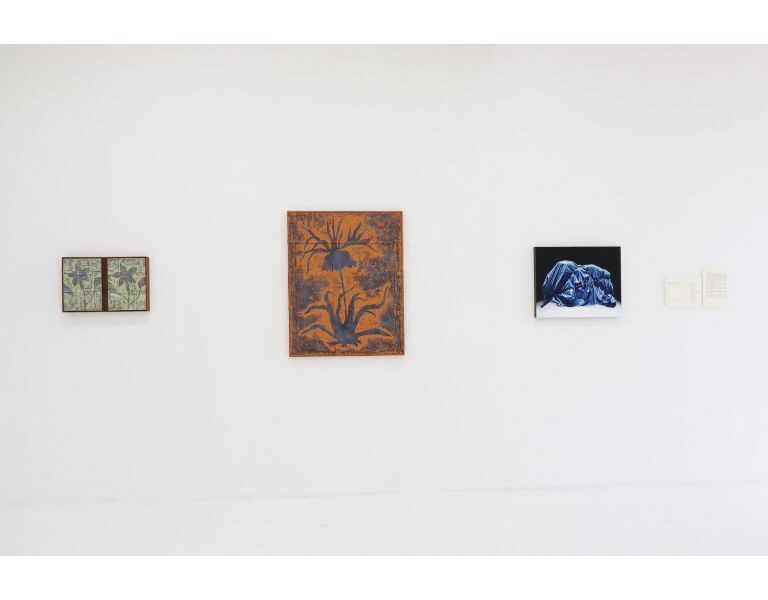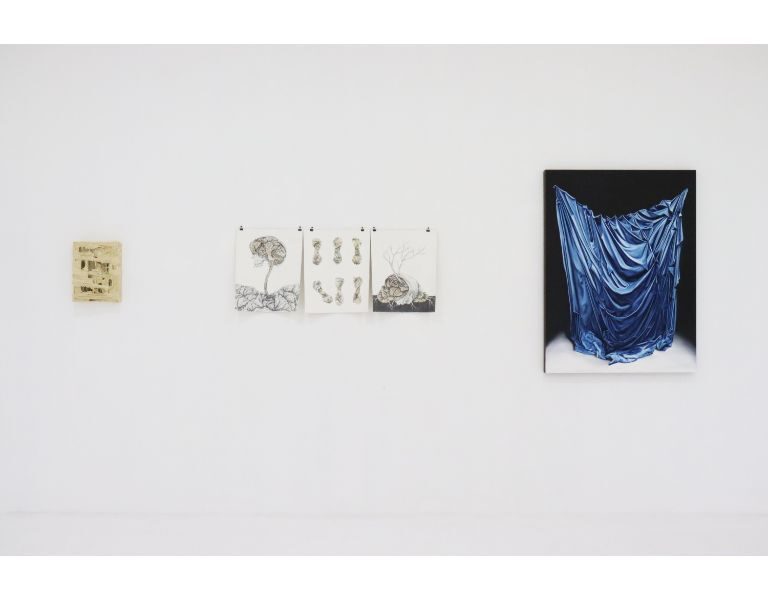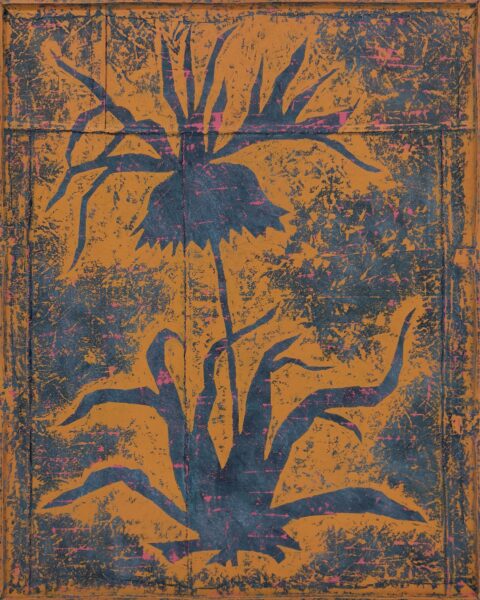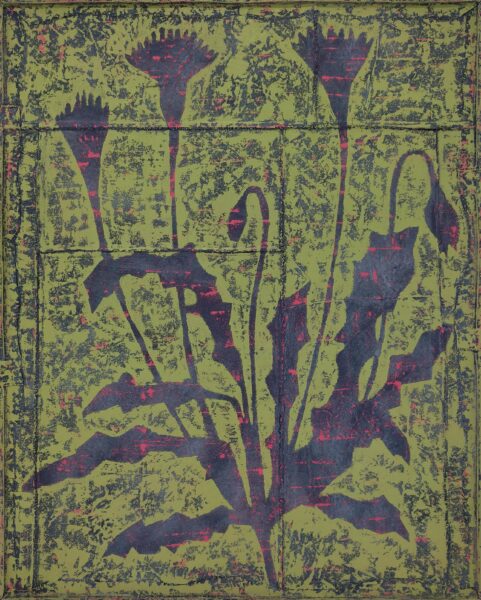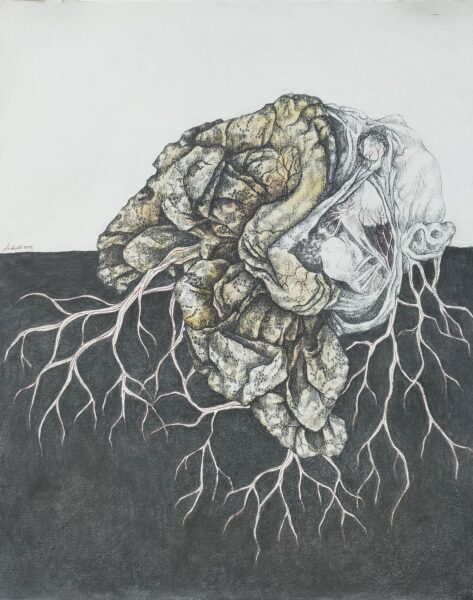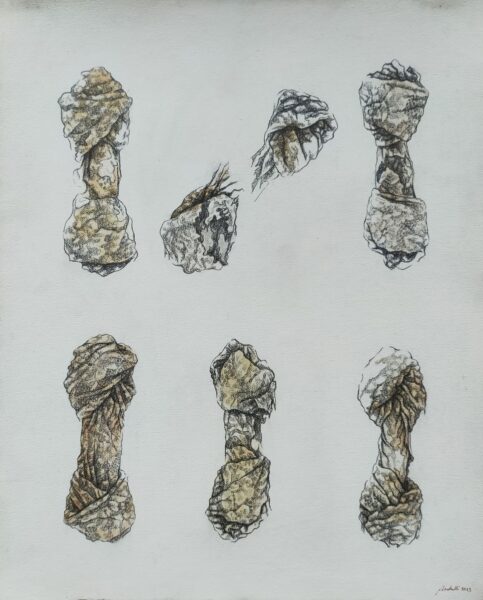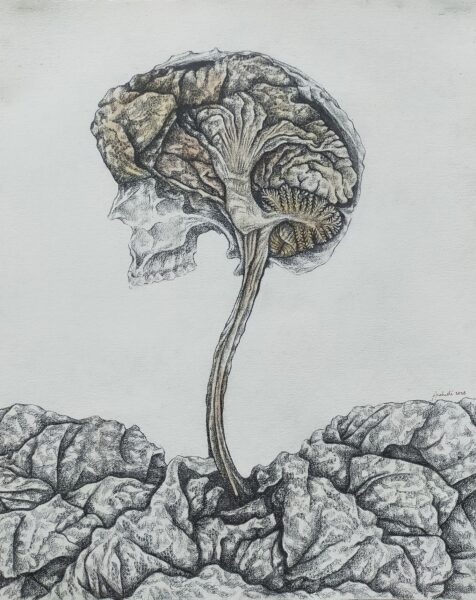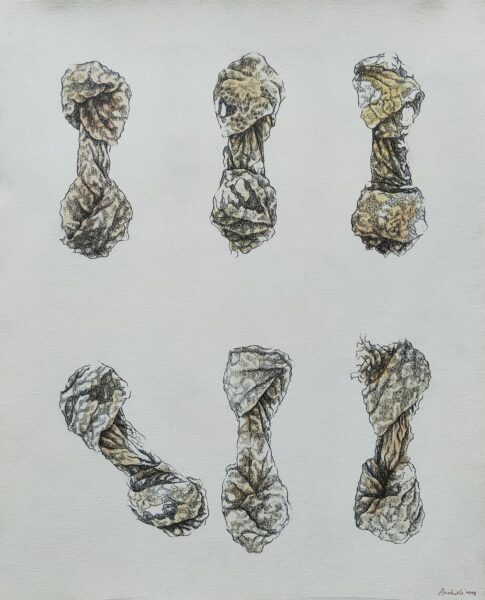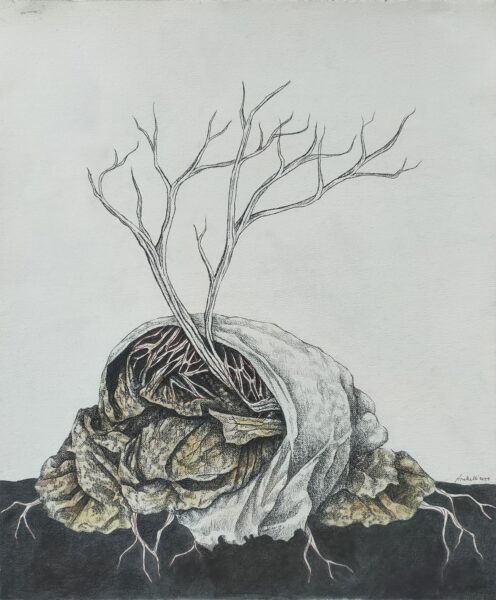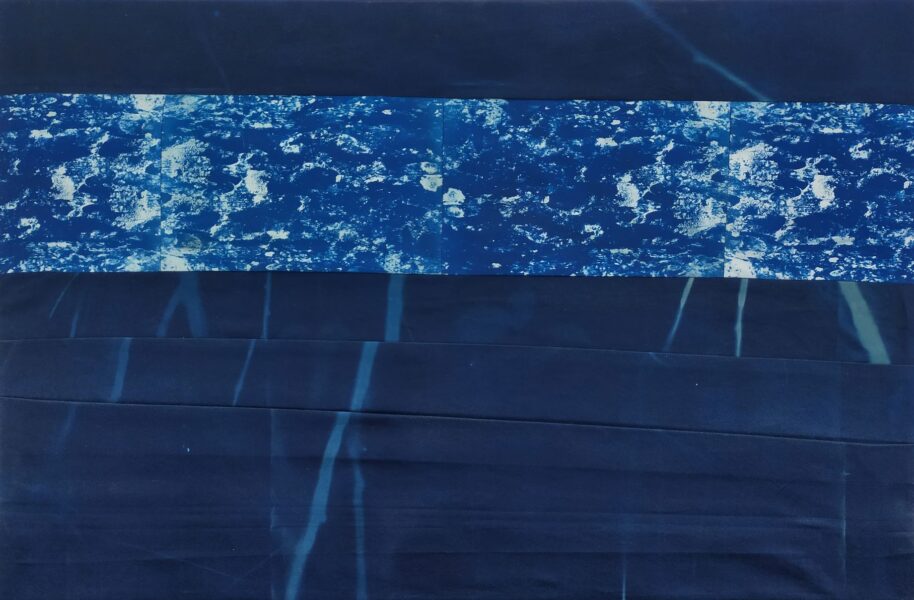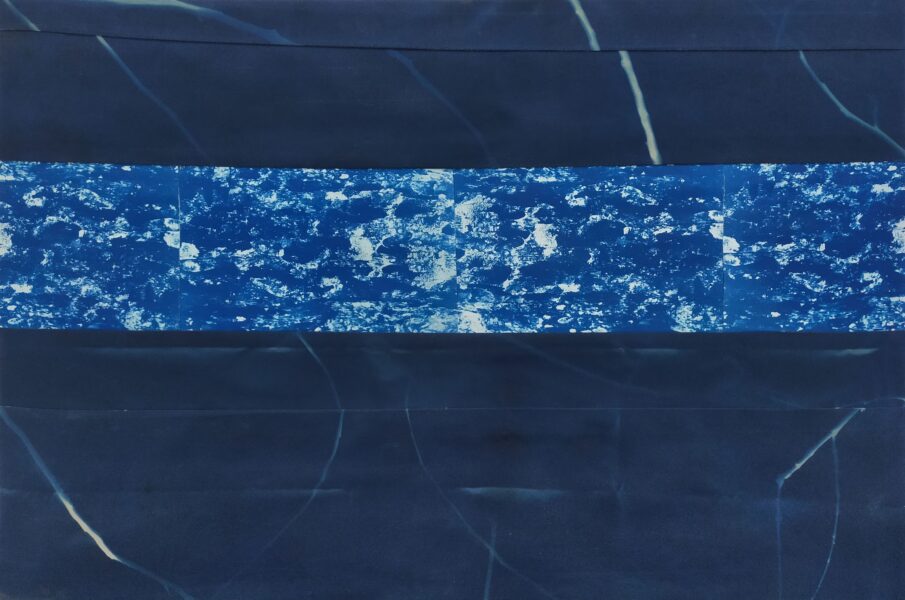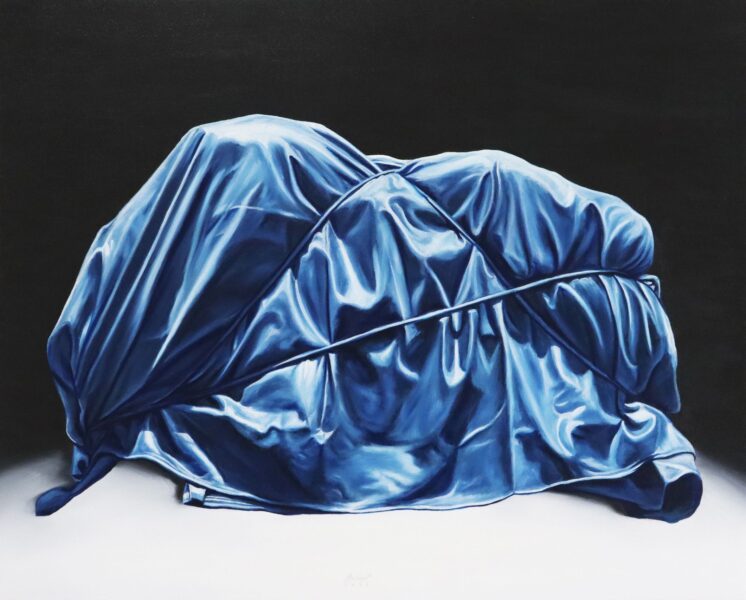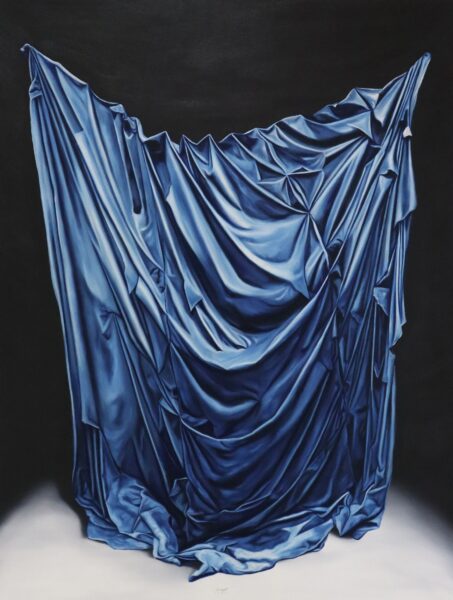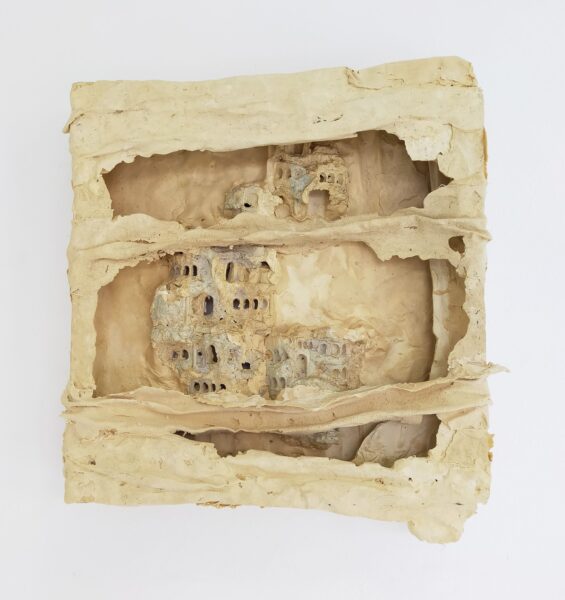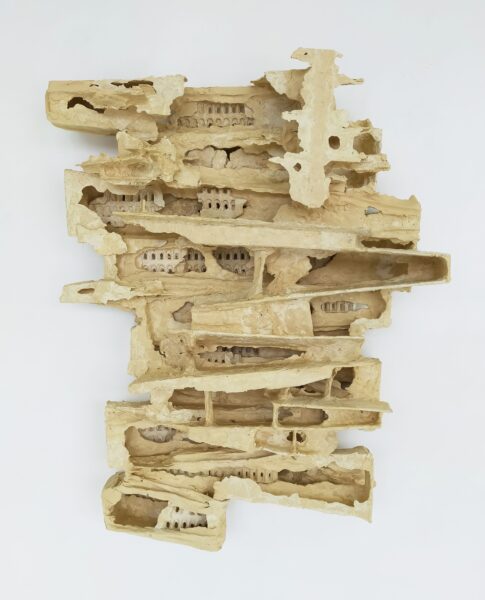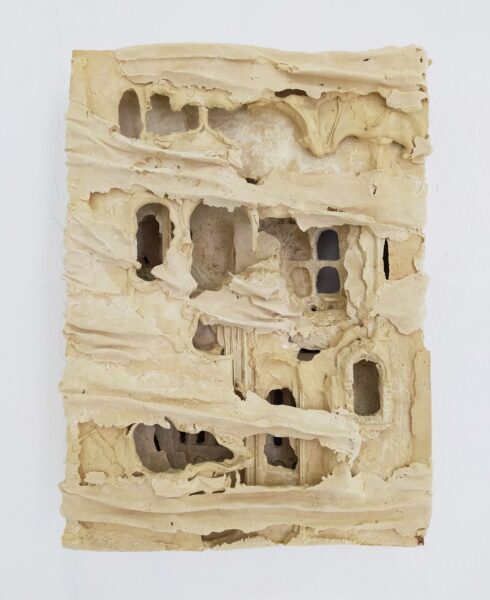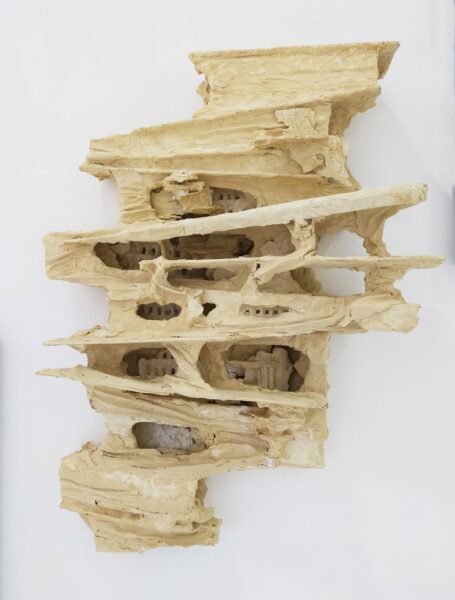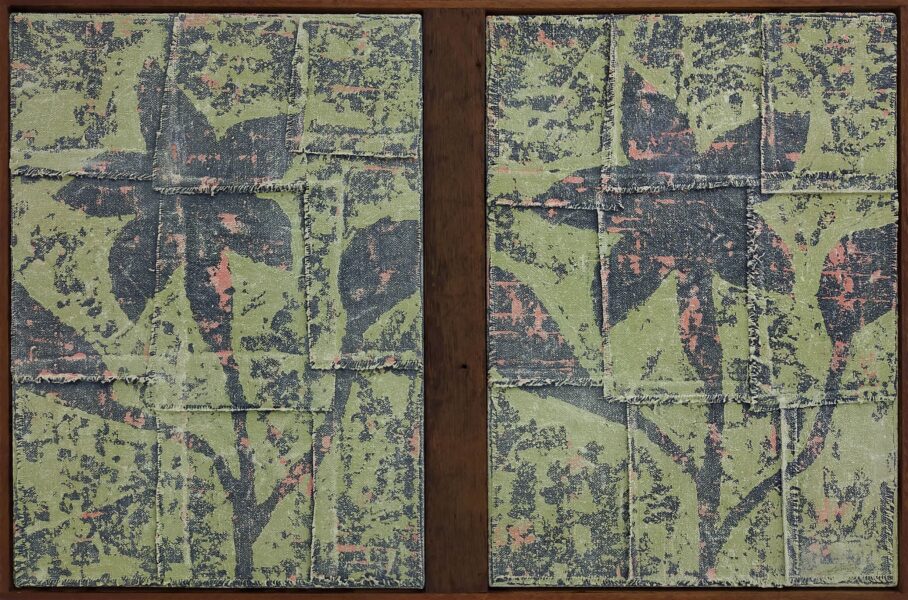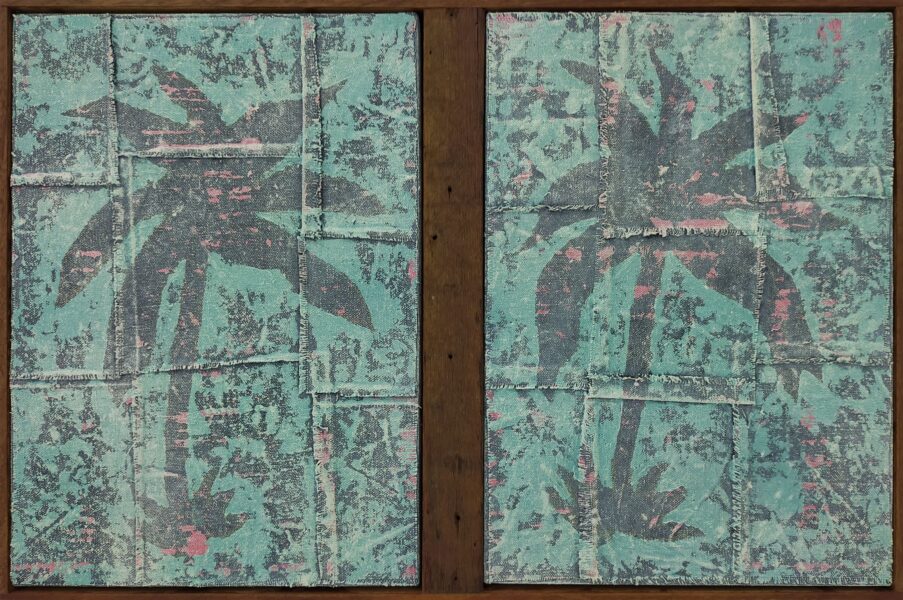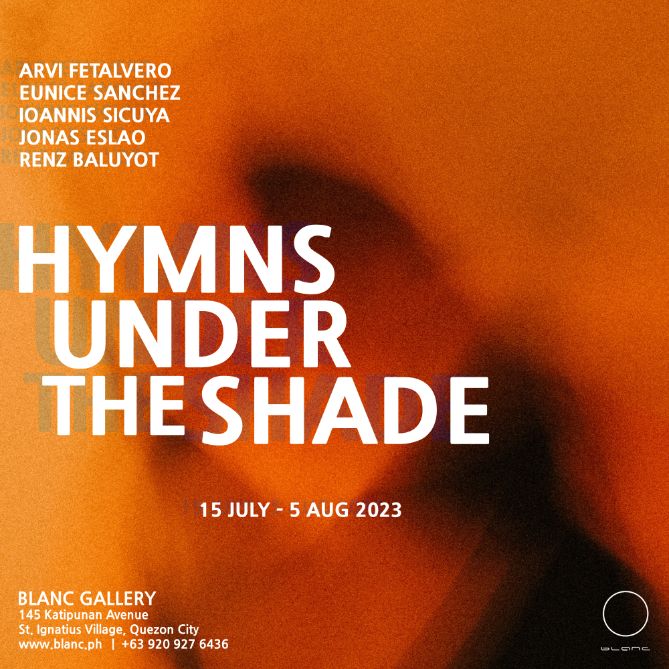
HYMNS UNDER THE SHADE
Form in art can be described as the element of shape among different elements that define the work or the physical characteristics of the work as it takes space. Clive Bell’s theory on the “significant form” postulates that for an object to be considered a work of art, it must elicit aesthetic emotion from its audience. Following the rise of modern art, artists have appealed to such by continuously experimenting and defying tradition: an object no longer becomes simply an object, and a painting no longer carries the obligation of representing the natural state of anything. Thus, the act of layering, covering, and concealing is apparent among the many attempts of artists to transform objects beyond their purpose or otherwise. In the late 1950s, the Bulgarian-American artist Christo started appropriating and wrapping cans, chairs, bottles, telephones, and other everyday objects as a way to deprive them of their function, to redirect the gaze from any preconceived meanings or narratives that they hold while directing us towards the understanding of their now sequestered form. Several decades later, the Korean artist Do Ho Suh would recreate his childhood home through polyester fabric and silk, forming haunting soft sculptures of objects from his past. In this similar regard, the exhibition “Hymns Under the Shade” is a survey of parallel approaches to form
Referencing anatomical and botanical illustrations, Arvi Fetalvero’s assemblages probe the meaning of progress as one relates to the innate instinct of plants and humans to grow, adapt, and cope. In demystifying parts of plants and the human body while exposing the rest, Fetalvero reconciles that to survive, we must learn to bury fragments that no longer serve us and make room for the remaining parts to grow.
Meanwhile, Eunice Sanchez brings forth related propositions to form that link humans and trees through the process of shedding. While it allows the natural process of growth, shedding also indicates a reaction to living conditions, diseases, or infestations. Sanchez’s cyanotype prints on textile employ a technique akin to shedding in producing images that wrestle between “keeping and losing”. The exposure of the print to sunlight rests on the artist’s decision to preserve what could be held for as long as possible.
The idea that building (structures, etc) is inherent to nature is a recurring theme in the works of Ioannis Sicuya. In his exploration, he samples the image of a hornet’s nest, which consists of hexagonal combs made from saliva and wood pulp that bees chew and fashion into a hive. Sicuya builds on this instinct of humans to plan and design structures while becoming architects of habitats and dwellings. Organic exteriors of a beehive are reproduced in sculptural forms; inserted are human-made structures as interiors producing hybrid colonies that reflect Sicuya’s study on planning and design.
Images of vanishing elements from the tropics are at the forefront of Jonas Eslao’s works. As a painter who approaches abstract expressionism through gestural landscapes, Eslao’s consideration of form does not rely on the images produced. Instead, he shifts his focus to the influence of the internal stimulus as a controlling factor in the production of an image. However, this is not limited to painting but somehow resonates as well in Eslao’s mediation of the medium— applying layers and layers of discarded canvas as he sets the ground for his surface to determine the form.
Central to Baluyot’s works are themes anchored on his studies of urban decay and the changes in the urban environment. As if suspended in air, his paintings depict objects covered, wrapped, and burrowed; they are like quiet doors that attract our curiosity about the possible hidden image underneath. Like the complex layers of a city, Baluyot proposes that we look into what has been masked and disguised to expose reality.
Together, these perspectives respond to Bell’s requirement to declare an object a work of art. Here, we find forms that provoke sentiments, feelings, and emotions: a hatch that bares our vulnerabilities as we hum under the shade of comfort from expressing ourselves through objects.
Gwen Bautista
Works
Documentation
